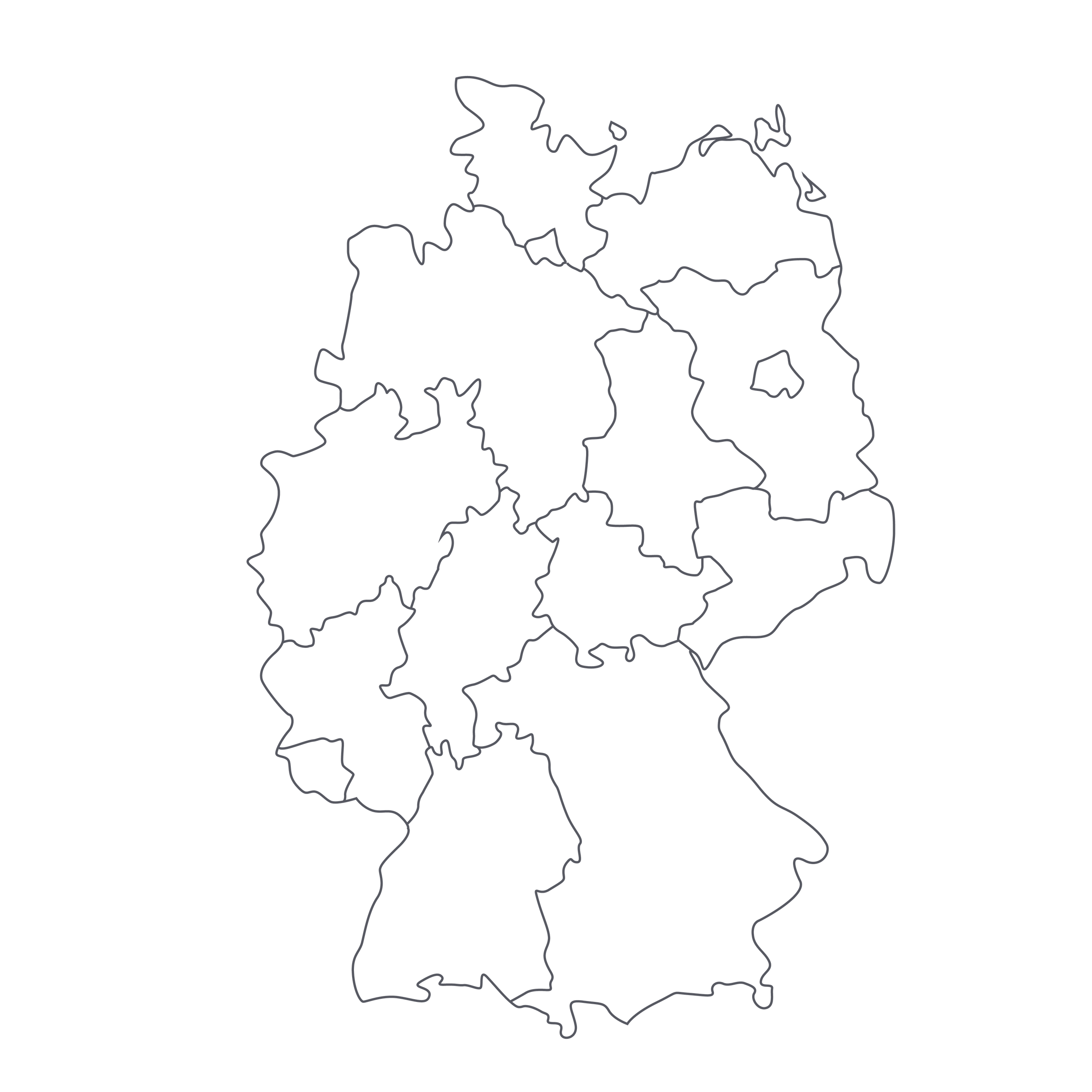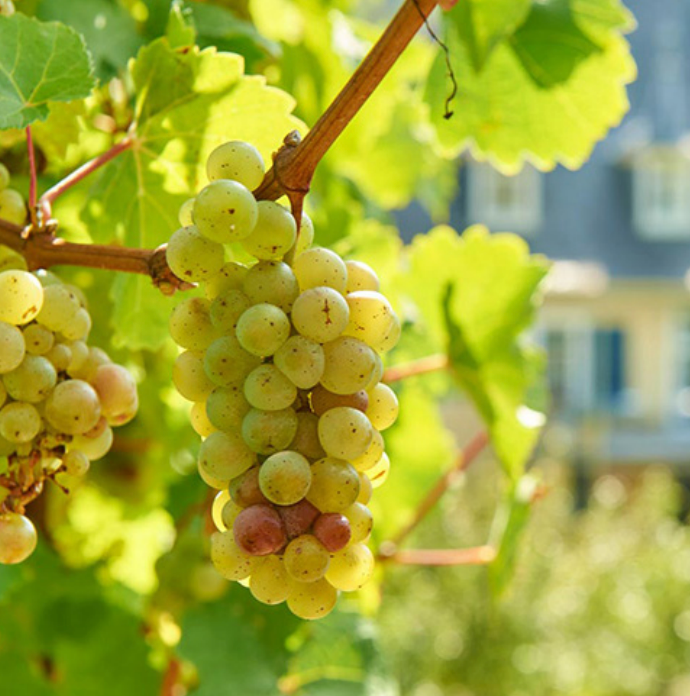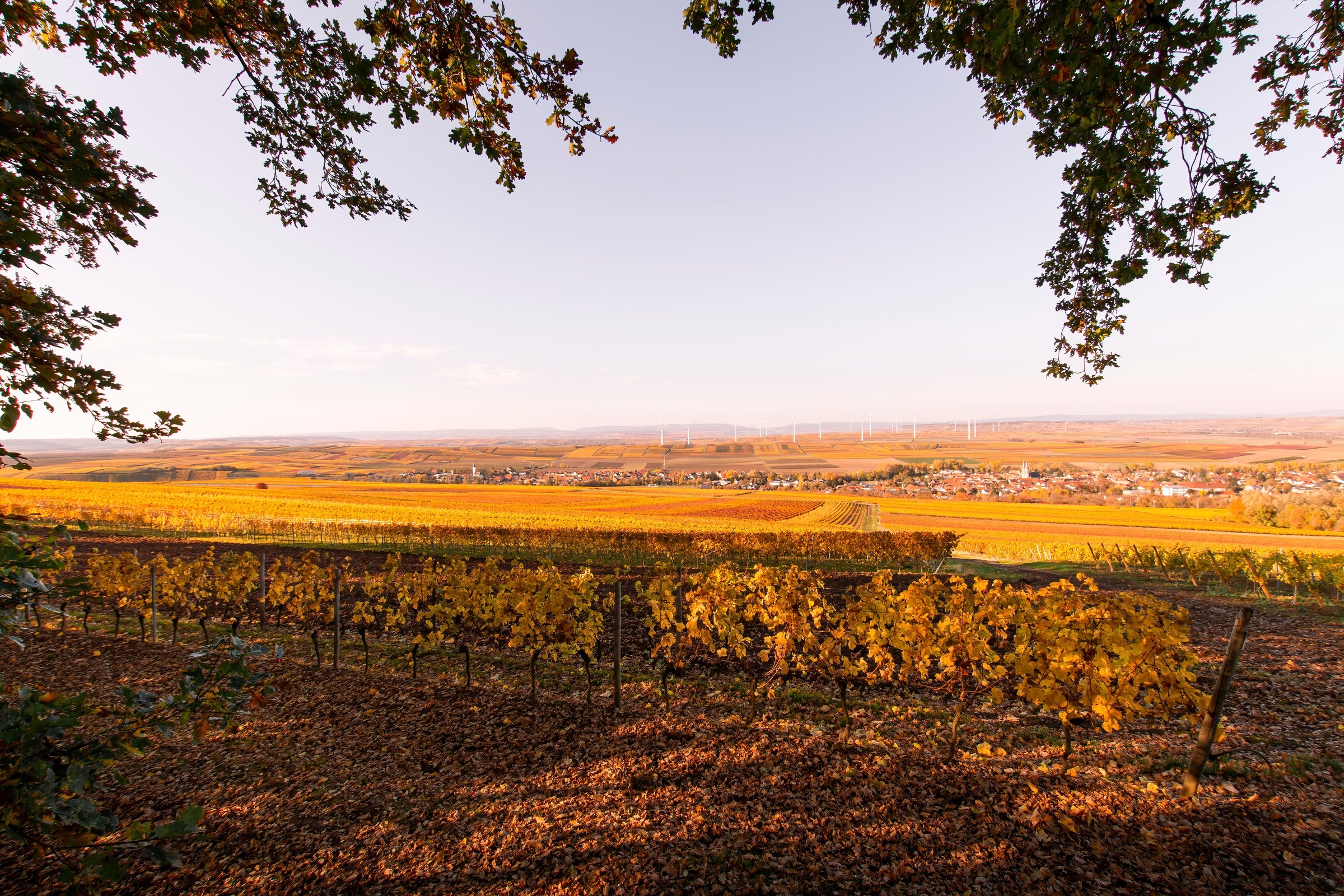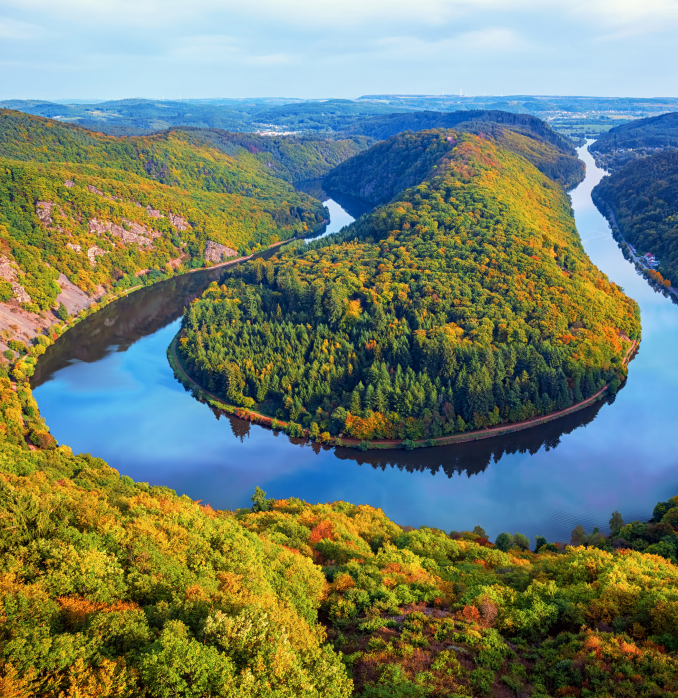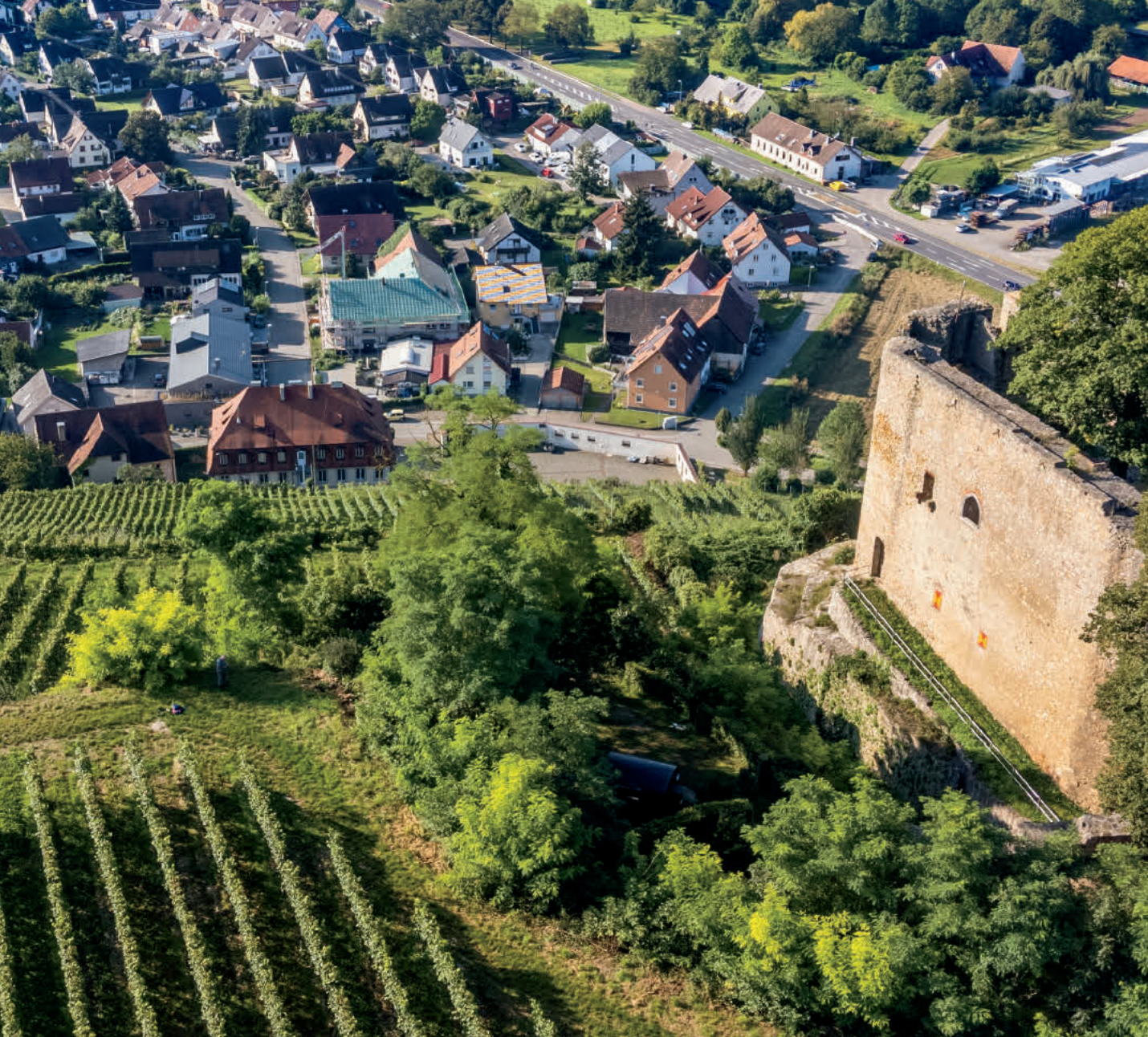When you open an aged, Auslese-level Riesling like this one from Schloss Johannisberg, it doesn’t merely make an impact: It comes at you in waves, to the point where you need to slow down, regroup, and try to process it all. That’s my kind of white wine! And while today’s 2005 is richly textured and off-dry, it is also way more versatile at the table with food than many people give it credit for.
The ‘oohs’ and ‘ahhs’ around the tasting table as we tasted this bottle were followed by a host of mouth-watering ideas for possible food partners, many of them from the spicy, southeast-Asian canon but not limited to that. Having taken on a deeper minerality and a ‘petrol’ intensity after more than a decade in bottle, this Auslese is, in one sense, a meal unto itself—but whatever you do,
don’t treat it like a “dessert” wine. There are still several rungs of the German sweetness ladder to climb before you get there; what you get in classically styled Auslese is the Riesling grape showing off its best self, doing its high-wire act of richness versus acidity like no other grape variety can. If you haven’t guessed by now, I’m positively entranced by this wine and wish we had more of it to share: We can offer up to six bottles per customer today, and if recent aged Riesling offers are any indication, I don’t expect it to last long. Today’s wine not only showcases Riesling at its best, it unveils a priceless story: that of an 18th century courier who, fortunately, was late one day.
If we took a peek into the notebooks of studious, theory-crushing sommeliers, we would surely find odes to Schloss Johannisberg. Like so many wine stories, it begins with religion and monks. In the early 9th century, Benedictines found a hilltop in the Rheingau, just outside of the village of Weisbaden, with a commanding view of the Rhine river. Here, they built their basilica and named it “St. John the Baptist.” Over the course of 300 years, the monastery, its vineyards, and village became “John’s Mountain,” or Johannisberg. Schloss Johannisberg is a total independent estate, a rare “super-monopole”—the producer, its vineyards, and village are one in the same (with no outsourcing of fruit and no selling of fruit to other estates). Since its inception, the ownership of the estate has changed many times (the current owner is the Oetker family, owners of a baking-products multinational), but the land has been a constant, an unprecedented 1,200 years, saved and guided by its immortal lifeline, Riesling.
The Johannisberg estate got its “Schloss,” or castle, in the 18th century thanks to a man named Konstantin von Buttlar, Prince-Abbot of the Fulda district (say that five times over!). Under his leadership, he made Schloss Johannisberg a powerhouse Riesling estate; he built a princely three-winged castle and planted over 290,000 Riesling vines which, he discovered, excelled in the quartzite and loam-loess soils. During Konstantin’s era, the grapes were typically picked on the same day in mid-October, but his successor (another Prince-Abbot of Fulda) thought the wines were too sour and demanded a courier frequently bring him grapes to taste so he could decide when to summon the harvest. In 1775, the courier was a few weeks late, and when he arrived, some grapes were moldy (with a then-mysterious, later “noble” rot). The workers tried to pick around the rot, gathering only the healthy berries, but the yields were too low, so the cellar master decided to pick the moldy berries and make wine. At the time, what seemed like a viticultural disaster turned into the most delicious, most sought-after wines of the region and became our golden precursor to the modern day Spätlese style.
Pushing the picking envelope further, the Auslese style, typically affected with a higher percentage of noble rot, soon followed in the 1780s (then Eiswein in the 19th century). Like Chenin Blanc, Riesling is a beloved chameleon grape that delivers insane pleasure across an accordion of styles. Right now, there is a big love affair with dry Riesling, and that’s a good thing. But the sweeter styles, like Auslese, take an axe to the ice, peel off that thick layer, and dig deeper towards the hardcore soul, of perhaps the world’s most magnificent variety.
Considering its extreme northerly location (scraping the 50th parallel), Schloss Johannisberg is a temperate, botrytis-friendly climate because of its position. The Rhine river stretches wide here, breeding humidity and stabilizing temperature swings, while the Taunus hills to the north protect against the harsh winds. This classic example of meso-climate couldn’t be more profound with the 2005 vintage, an incubator year for noble rot wines of enormous fruit, luscious acidity, and colorful minerality. “Rosalack” refers to the pink seal which corresponds to Auslese quality. The colored seals, originally called the “Siegellack” (est. 1820) are a signature of Schloss Johannisberg bottles (Grünlack is green for Spätlese; Silberlack is silver for the dry wines; and so forth). The winemaking is traditional: Gentle pressing of the grapes with fermentation in stainless tanks and large wooden vessels, made from the oaks of the local forests. Then, the Riesling ages in large, old wooden vessels, spending a considerable amount of time on its lees to foster complexity. As they state, “Great wines don’t happen by chance.”
You don’t have to wait for a special occasion to open today’s wine; when you open it, the occasion will be in the glass. Use a Riesling or an all-purpose stem and serve the wine somewhere in the 45 to 50 degree range. A pale, golden-yellow core moves to a silvery rim. On the nose, the wine takes the best parts of Riesling and puts them in the perfect morning light— white peach, golden pear, pineapple, and little sweet limes. The fruits are stacked, seeping with orange, honey, and chunks of cold citrusy minerality. On the palate the wine deserves the highest compliment, words like “ethereal” and “sublime,” moving the impossible—making a richly concentrated wine on the nose, feel incredibly free and nimble on the palate. And no other grape moves the impossible, like Riesling. Unlike the impossible, food pairings with today’s wine make a mountain of possibilities, but if there is one dish that tops the mountain, it’s curry. Like Riesling, curry has a flurry of styles, varying by culture and levels of sweet, spice, and heat. Panang or Phanaeng is an orange-reddish Thai curry—thick, salty and sweet, with a buttery peanut flavor. It’s strong headed, insanely flavorful, and usually gets along with crisp lagers or Belgian ales…or Riesling Auslese. Curries are intimidating unless you grew up in a Thai family (most of us surrender to takeout from the family-run joint down the street). So, take a clue from Johannisberg, be a trailblazer, and break the seal! Cheers!


